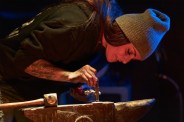In the unlikely event you don’t know Jimmy Chin, you most certainly know his work.
A pro climber, skier, photographer, film director and author for more than two decades, Chin has bagged multiple first ascents and descents, among other notable feats.
He has also documented numerous epic adventures for such publications as National Geographic, Vanity Fair and Outside — and published a New York Times bestseller, There and Back: Photographs from the Edge, compiling some of his greatest shots.
Oh yeah, and he and his wife, Elizabeth Chai Vasarhelyi, directed and produced the Oscar-winning 2018 documentary Free Solo. You may have heard of it.
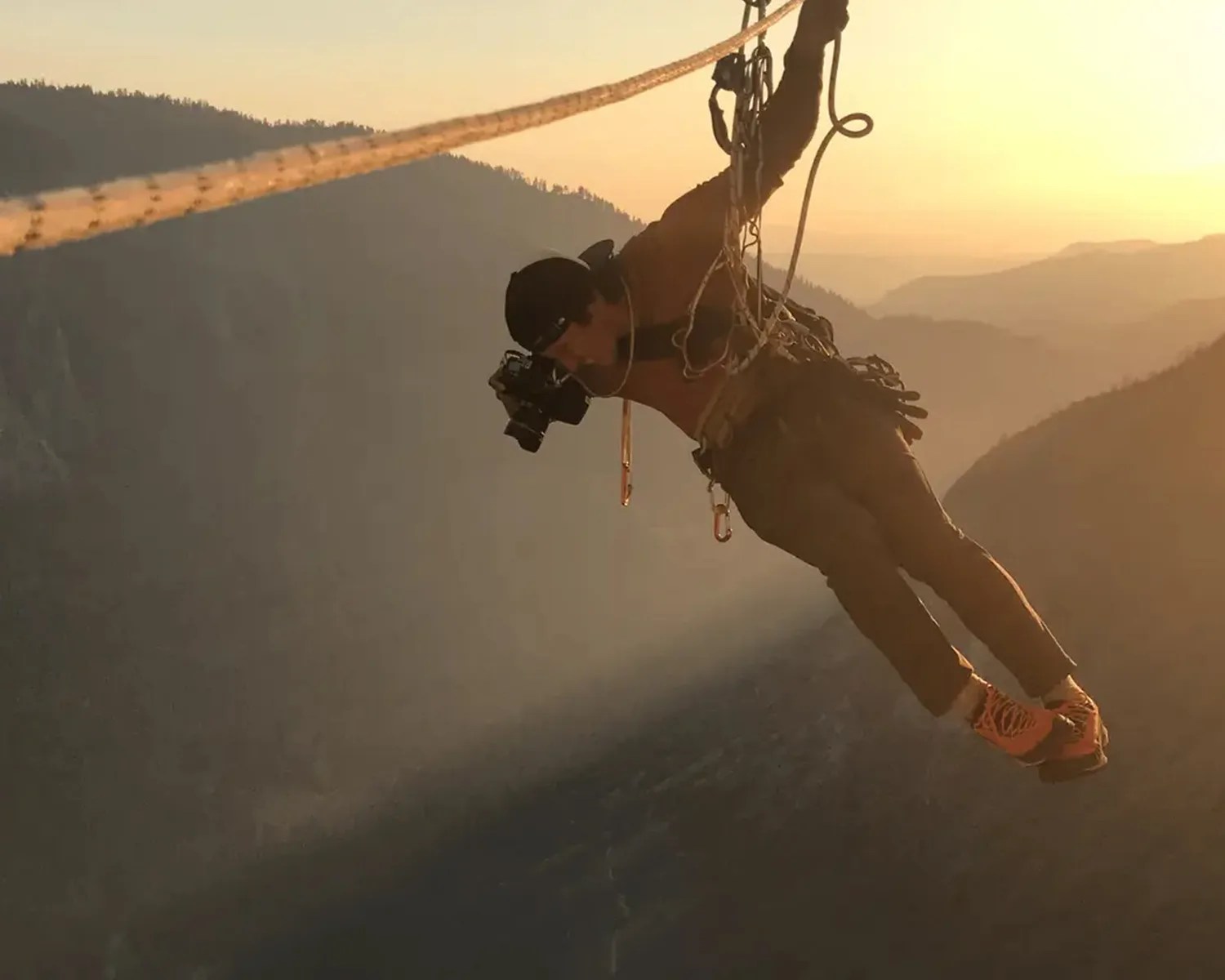
The pair has also collaborated on other acclaimed docs, including 2015’s Meru and 2021’s The Rescue, as well as the 2023 Diana Nyad biopic Nyad, starring Annette Bening and Jodie Foster.
Naturally, I was stoked to catch up with him in New York’s Central Park, thanks to Bremont, the esteemed watch brand for whom Chin semi-recently became an ambassador.
We hiked up to some rocks, took a seat and chatted about his approach to risk, advice for budding photographers, favorite gear — including a slick new tripod he’s launching with Peak Design — and more.
With all Chin has seen and done over the years, I wasn’t quite sure where to start. So as we strolled up to our hangout spot, we kinda went back to where it all began…
The following interview has been edited for length and clarity.
The last time I saw you was a couple of years ago, when The North Face introduced the Athlete Development Program. I remember you gave a very heartfelt but funny talk about how you got started, and how your parents had something different in mind for you…
Yes. You know, I grew up in a small town in south central Minnesota. Let’s just say not a lot of high-altitude alpinists have come out of Mankato.
My parents had kind of a traditional sense of what they wanted my career path to look like, which was being a lawyer, a doctor or a professor — and that’s not the path that I ended up choosing, which they were initially quite disappointed by.
But I chose to do the things that moved me, and gave meaning to my life and that I was passionate about, which ended up being climbing, and being a photographer and a filmmaker.
“My great friend and mentor Jon Krakauer said: ‘There are two great risks in life — risking too much, and risking too little.’ You need to actually pay attention to both risks.”
I’m assuming they eventually came around to support your decision?
Yeah, a bit reluctantly. I had to kind of find an actual way of making a living. I became a professional climber in 2001 and signed with The North Face, and then started shooting photography pretty seriously at that point as well. Then after 2003, I started shooting for National Geographic, which was something that they recognized and they thought, oh okay, maybe he’s got a chance of making a living.
I read that the very first photo you sold, you took with a camera you borrowed from a friend?
Yeah, I actually just saw my friend Brady Robinson, who was my climbing partner, and he had bought a camera and was aspiring to be a professional photographer. He was taking photos while we were in Yosemite and then he actually handed me the camera and showed me how to use it.
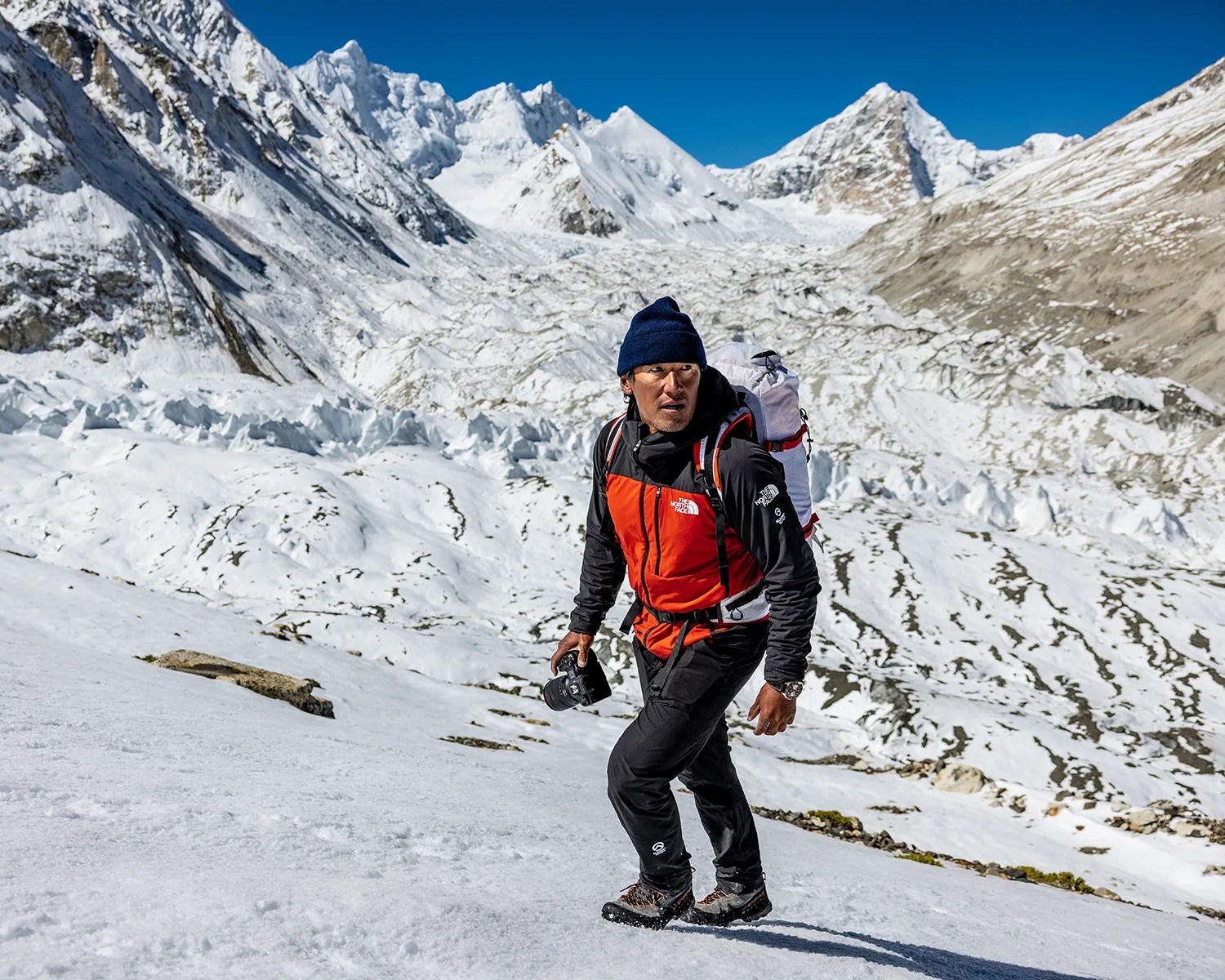
I took a photo with it and didn’t think much of it until the end of the month when he went and tried to sell the photos and he only sold one photo, which happened to be the photo that I took. He wasn’t particularly happy about it.
He’s happy about it now, because he says that he’s responsible for my entire career, which is kinda true and I give it to him. He sold that photo and I took the money and bought my own camera, and that was kinda the beginning.
Alright…
And then I started shooting with a lot of my friends, who ended up being some of the great climbers of my generation. I always got the call because they knew I wasn’t a liability, and that I could move on El Cap and get in the right spots at the right times to shoot with them.
I looked at a ton of climbing photography and originally was mimicking what I saw, but then also started to think, okay, well, how can I make this better? I really was inspired by a few great photographers. One of them was Galen Rowell, and I looked at a lot of his work and I read a lot of what he’d written about photography and I really learned it through reading and experimenting.
“There’s a fine line between being a badass and being a dumbass. There’s a difference between gratuitous risks and highly calculated ones.”
What’s the biggest lesson you’ve learned since the start of your career?
My great friend and mentor Jon Krakauer said, “There are two great risks in life: risking too much, and risking too little.” We tend to focus on risking too much, but there’s a huge opportunity cost to risking too little. You need to actually pay attention to both risks.
You’ve cheated death multiple times. How do you balance the desire to get to the edge where the moments are and the basic human need for survival?
There’s a saying: “There’s a fine line between being a badass and being a dumbass.” There’s a difference between gratuitous risks and highly calculated ones. That’s a huge part of spending time in the mountains and making good decisions.
Tell me about your watch.
So this watch is the limited edition Bremont Terra Nova that I designed. I had this idea of putting a mountain range, the Tetons, on the back, and you still get a view of the [inner workings through the exhibition caseback].
It’s a pretty awesome timepiece. I wanted something that I could wear traveling, in the city, to events, but also take on expeditions. I needed something pretty reliable.
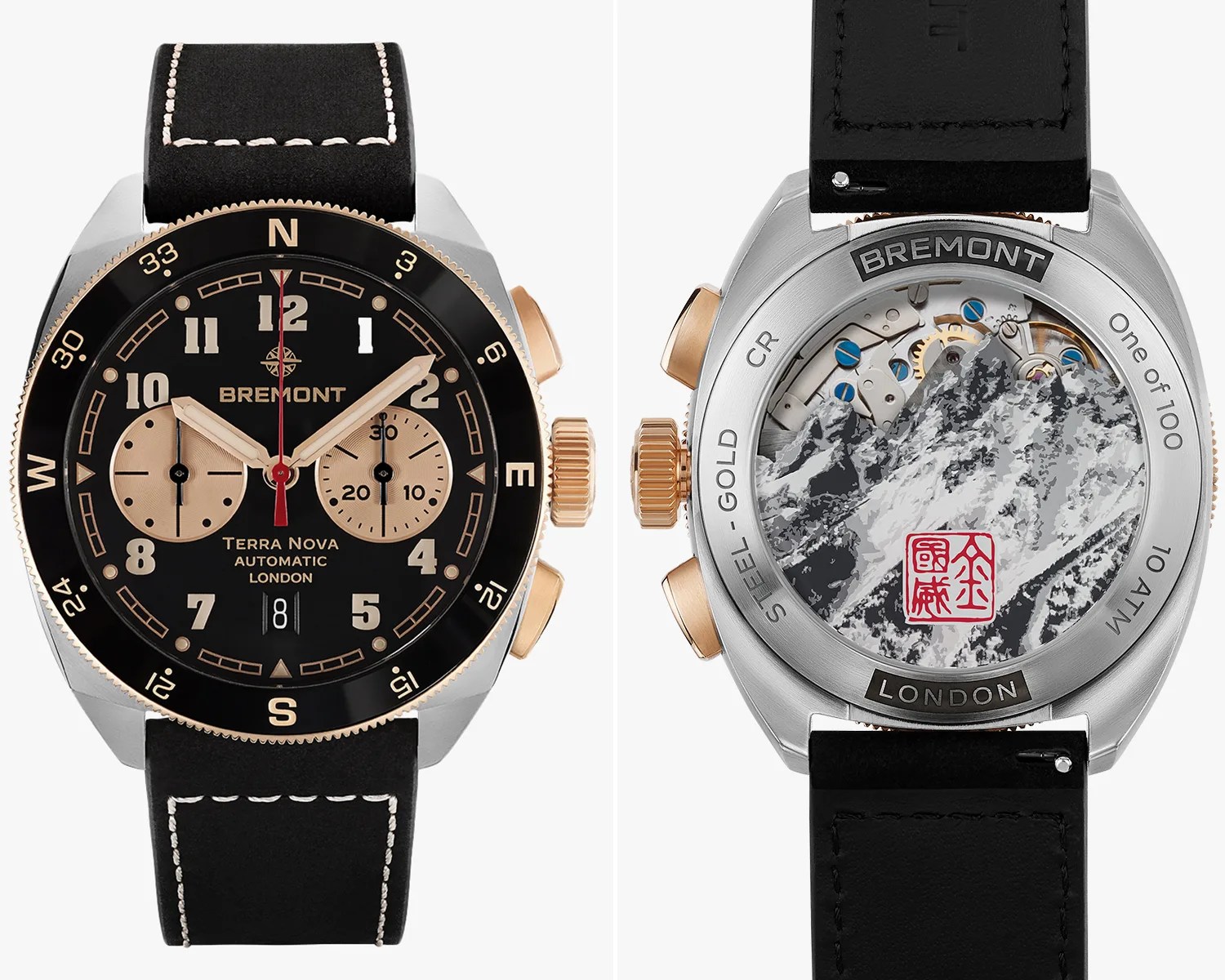
How big a role does timing play in getting the best images?
It’s huge. That’s why we always aim to get an alpine start. It’s also safer [to start early and not rush]. As my friend Peter Kroft likes to say, “On a big day in the mountains, you never say, ‘we started too early.’ ”
For shooting, I love ‘blue hour,’ the time right before sunrise and right after sunset. Oftentimes, that’s some of my favorite light because everything is really saturated and it’s really beautiful. It produces such different images, completely different from sunrise and sunset. But it’s really more like ‘blue 15 minutes.’
What’s your best photography tip for non-professional photographers?
We often like a photo, but we don’t understand why we like it. Learning basic things like the rule of thirds will help you [incorporate those principles in your photos]. Don’t get me wrong, there can always be happy accidents, too.
“For shooting, I love ‘blue hour,’ the time right before sunrise and right after sunset. Everything is really saturated and it’s really beautiful. But it’s really more like ‘blue 15 minutes.’ ”
What’s your best advice for phone photography?
Just realizing phone photography is photography. The same principles apply.
On a related note, let’s get into gear. Do you have your favorite camera here?
Yeah, so primarily when I’m shooting on expeditions or I’m out for a day of climbing, this is the camera that I shoot with, the Canon EOS R5 Mark II. Flip-out screen, incredible menu. It allows a lot of different types of angles where you can go lower and not have to crawl down to your belly to see what you’re shooting, or you can shoot up high. It’s super versatile and it’s lightweight.
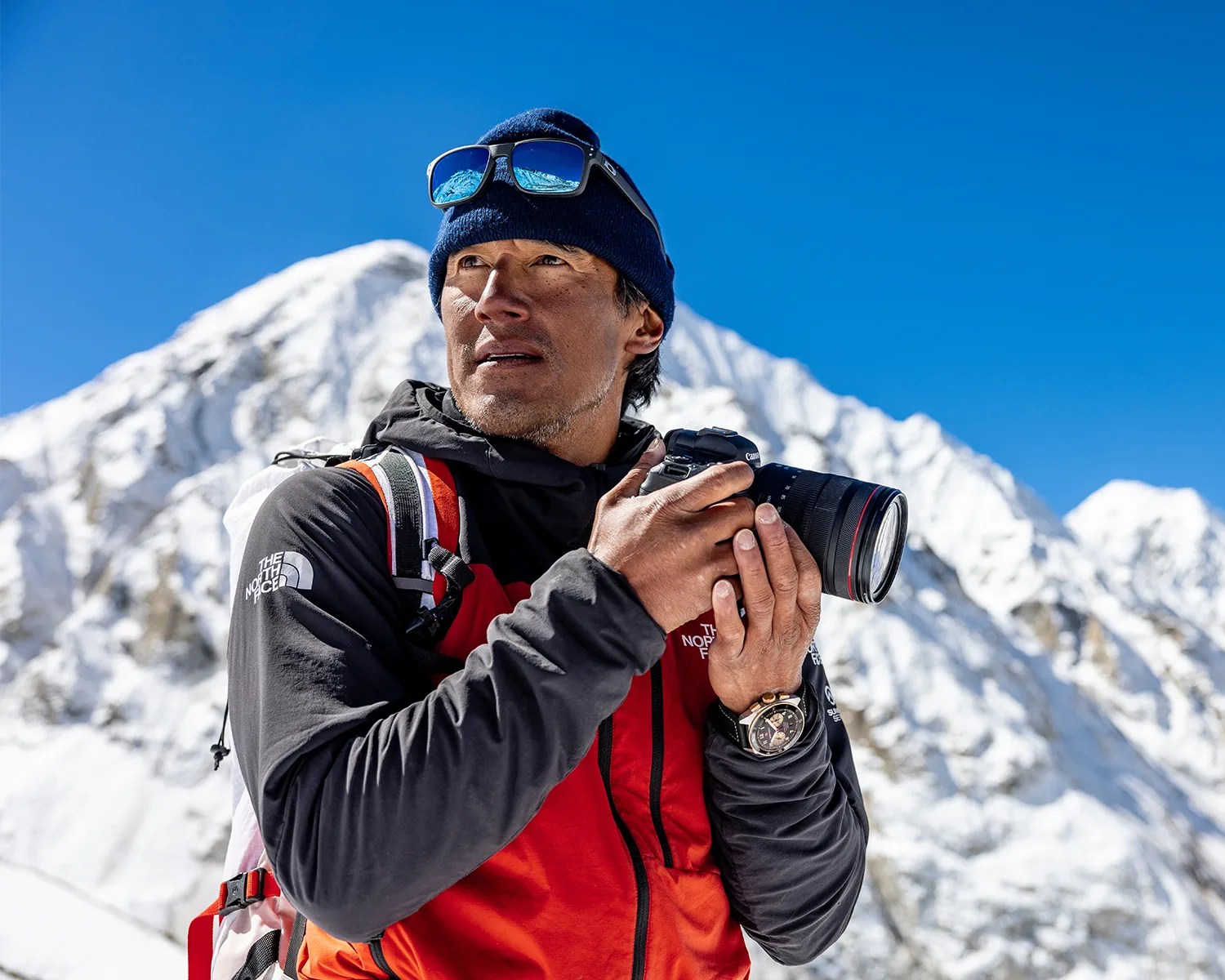
I usually carry a zoom lens. This is a Canon RF 15-35mm f/2.8L IS USM, but I often carry the RF 24-70mm f/2.8L IS USM. The new R Series lenses are amazing — super sharp, with really, really fast focus. I mean, these days, the autofocus on these is so incredible; shooting action is a lot easier than it used to be, because it can track your subject, even when they’re coming straight at you, which used to be really, really hard to focus.
What lenses do you rely most on?
My baseline kit for a longer trip would be the Canon RF 15-35mm f/2.8L IS USM, the RF 24-70mm f/2.8L IS USM and the RF 70-200mm f/2.8L IS USM. I might also bring the RF 50mm f/1.8 STM, a slightly faster RF 50mm f/1.2L USM, and a slightly faster RF 24mm f/1.4L lens.
The RF 24mm f/1.4L is great — one of the really fast f/1.4 lenses that’s amazing for night photography. That’s a pretty small kit, and you can travel with it. But you know, that range covers probably 95 percent of what I shoot with.
“When I pack, I lay everything out, I pack, then I probably repack. You know you are ready when there is nothing left to take away.”
What about for filming?
It goes the same for filming. The primes are beautiful and they’re fast. So my quiver of lenses, if weight isn’t so much an issue, includes a 14mm, I’ve got a 24mm, a 35, a 50, 85. Those are my primary workhorse prime lenses.
These cameras have gotten so light and fast and can do everything. It’s awesome. And it’s very sturdy and durable. I’ve taken this to 8,000 meters, I’ve taken it on climbs in the Tetons, in the winter, when it’s snowing — everything’s sealed very well. I’ve taken it up on El Cap. I’ve taken it on light and fast days where I’m doing a lot of travel through the mountains, and I’m climbing multiple peaks in the day.
You also have this new tripod here…
I realized I needed something that doesn’t exist. So I actually worked with Peak Design on this new tripod, and I wanted something that was light because a lot of tripods are really, really heavy.
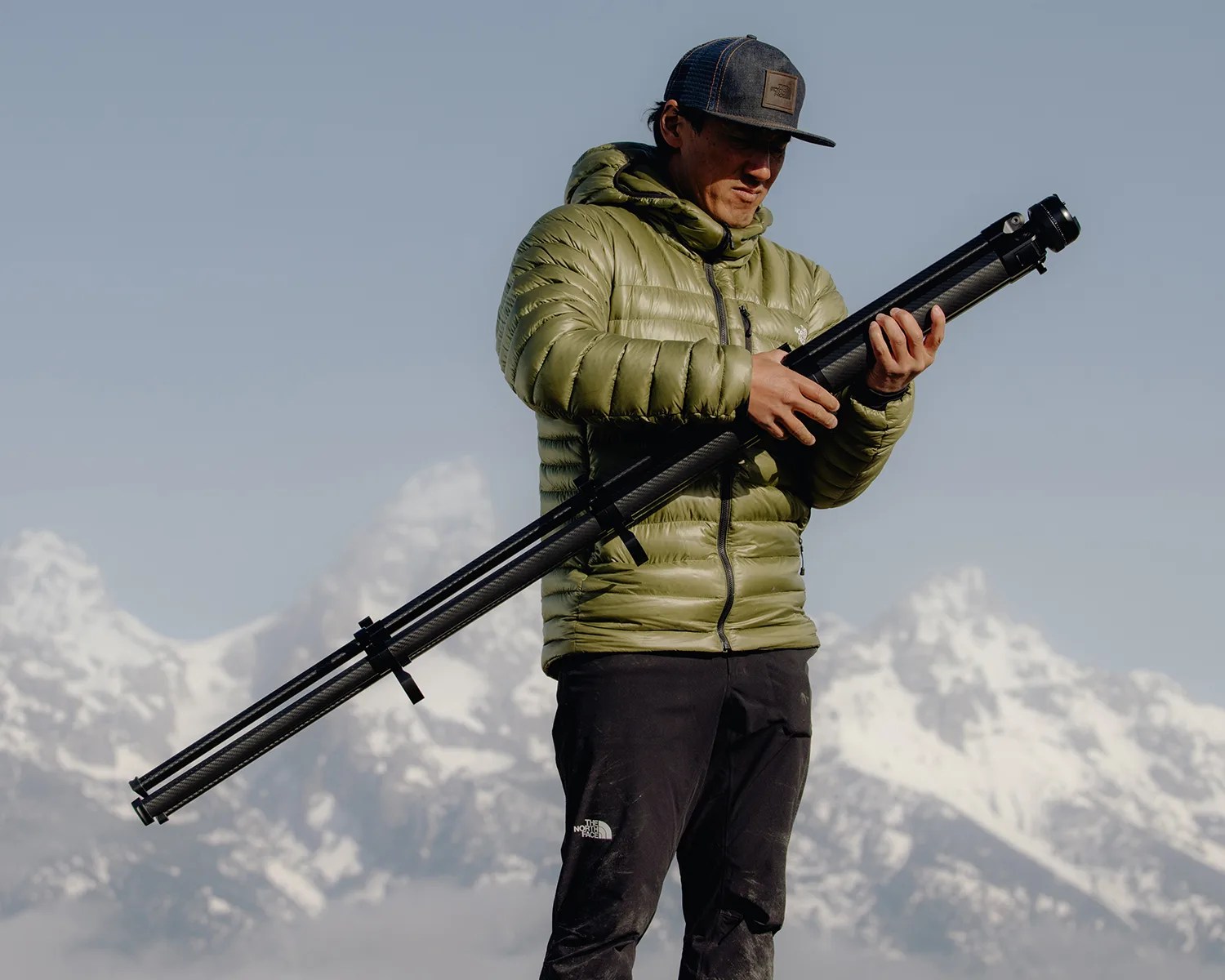
They [already] had an incredible travel tripod that was super light. I wanted something just a little bit beefier but still light and small and easy-to-use, and we built this badass, awesome, carbon-fiber tripod.
It’s super fast and easy to deploy, really easy to put away. I needed a head that was easy to adjust, easy to lock, easy to, you know, pop on and off. Funny enough, it even has this little tool that you can put your phone on here.
You can use this big, beefy tripod as a phone mount?
Yeah. Just kind of like a little hidden Easter egg in there. And you know it’s always been a tool that in some ways felt like a luxury … Should I carry it? Not carry it? But when it’s something this light, it’s just really important for me to be able to have something like this. It travels really easily. So I think we did a pretty good job.
It’s cool to see Peak Design return to its roots, because its very first Kickstarter project was the tripod…
Yeah, so, basically, this is like the next level. And we wanted something that we could use for video, and there’s an attachment head to it that pans and tilts, that’s super easy to attach.
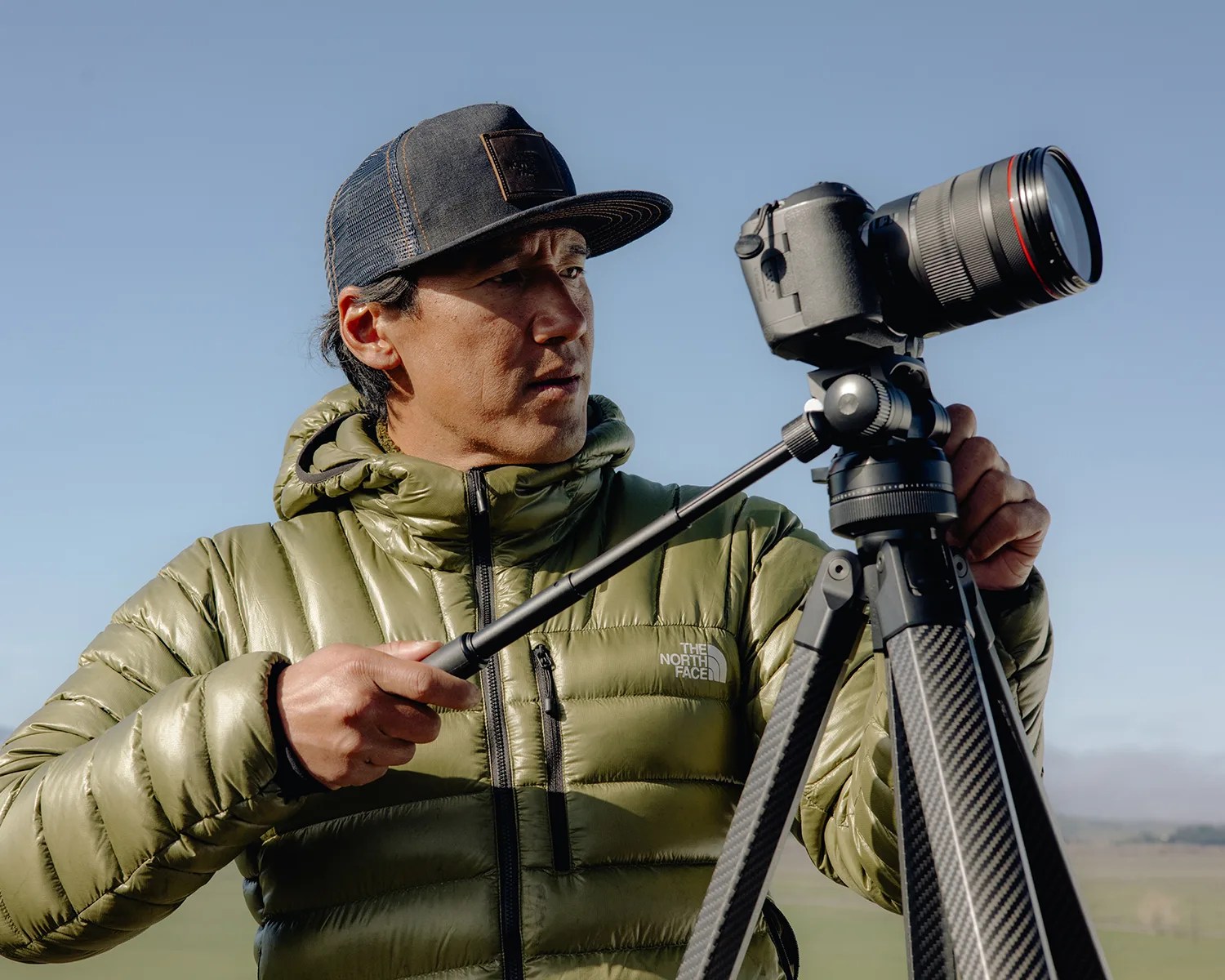
I would say most people who are shooting with the R5 or even a slightly heavier camera, this thing is going to be all you need, which compared to most professional video tripods, it’s like a fraction of the weight. Just a really clean simple design.
I remember an interview Gear Patrol did with Reinhold Messner where he talked about how, as he progressed in his mountaineering career, it became all about reducing what he brought. Does that resonate with you?
Yes it does. When I pack, I lay everything out, I pack, then I probably repack. You know you are ready when there is nothing left to take away.
Are there certain items you always pack?
Yeah, I always have a lightweight layer, a midweight layer, a lightweight weatherproof jacket, a light synthetic insulated puffy, and a down puffy — they are so light and packable and they could save your life.
[Specifically] There’s The North Face Breithorne Hoodie. I also have the Papsura FutureLight Jacket. Then there’s the Ventrix Hoodie, a synthetic puffy, and the Future Fleece Hoodie. I basically live in that thing. It’s like a sweater. If it’s cold in the house, I’ll put it on.
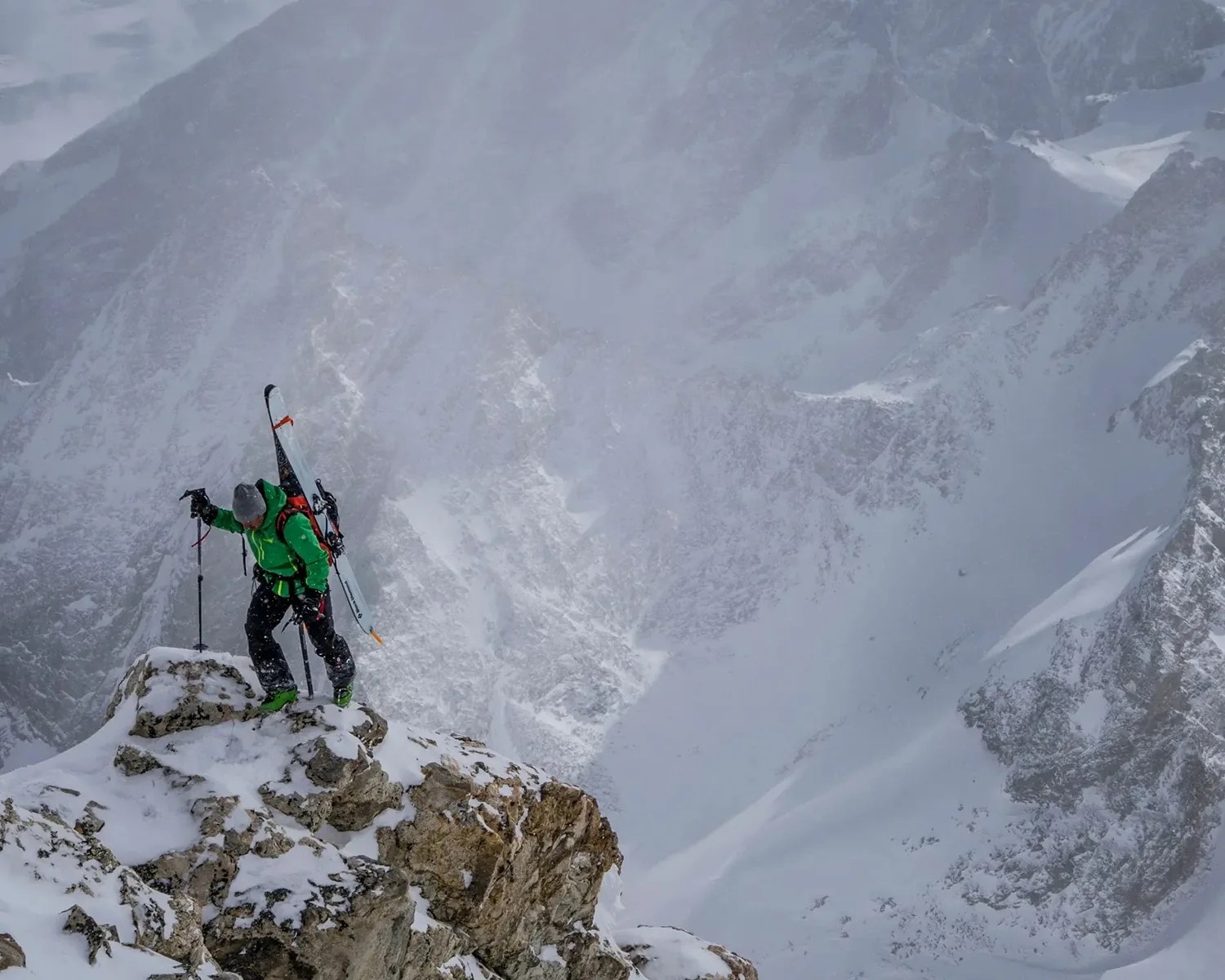
It’s sort of the Steve Jobs philosophy. If you already have those things, those are decisions you don’t have to make.
Oh yeah, I basically have a uniform. My kids make fun of me. I have like three T-shirts — one black, one blue, one grey.
Is there any piece of gear you use that was designed for something completely different? I’ve learned some ice climbers love Japanese fishing gloves. Are you a fan?
Yeah, I actually use them because they are waterproof and really, really warm. I’m actually trying to get The North Face to make something similar.
Anything else surprising you swear by?
Jack Black lip balm. It has lanolin, which helps maintain moisture, and it’s 25 SPF, so you can even use it on your face as sunscreen.
What’s next for you?
I’ve been on the road for the past two months, so to be honest, I’m really looking forward to getting home to my family and friends. That’s what There and Back is all about — at the end of the day, my goal is always to get back. And if I had to be trapped somewhere for 25 years, it would be Jackson Hole.
Editor’s note: The Pro Tripod by Peak Design is now live on Kickstarter in three different sizes — and two delivery windows — starting at $619. Earliest estimated delivery is October.
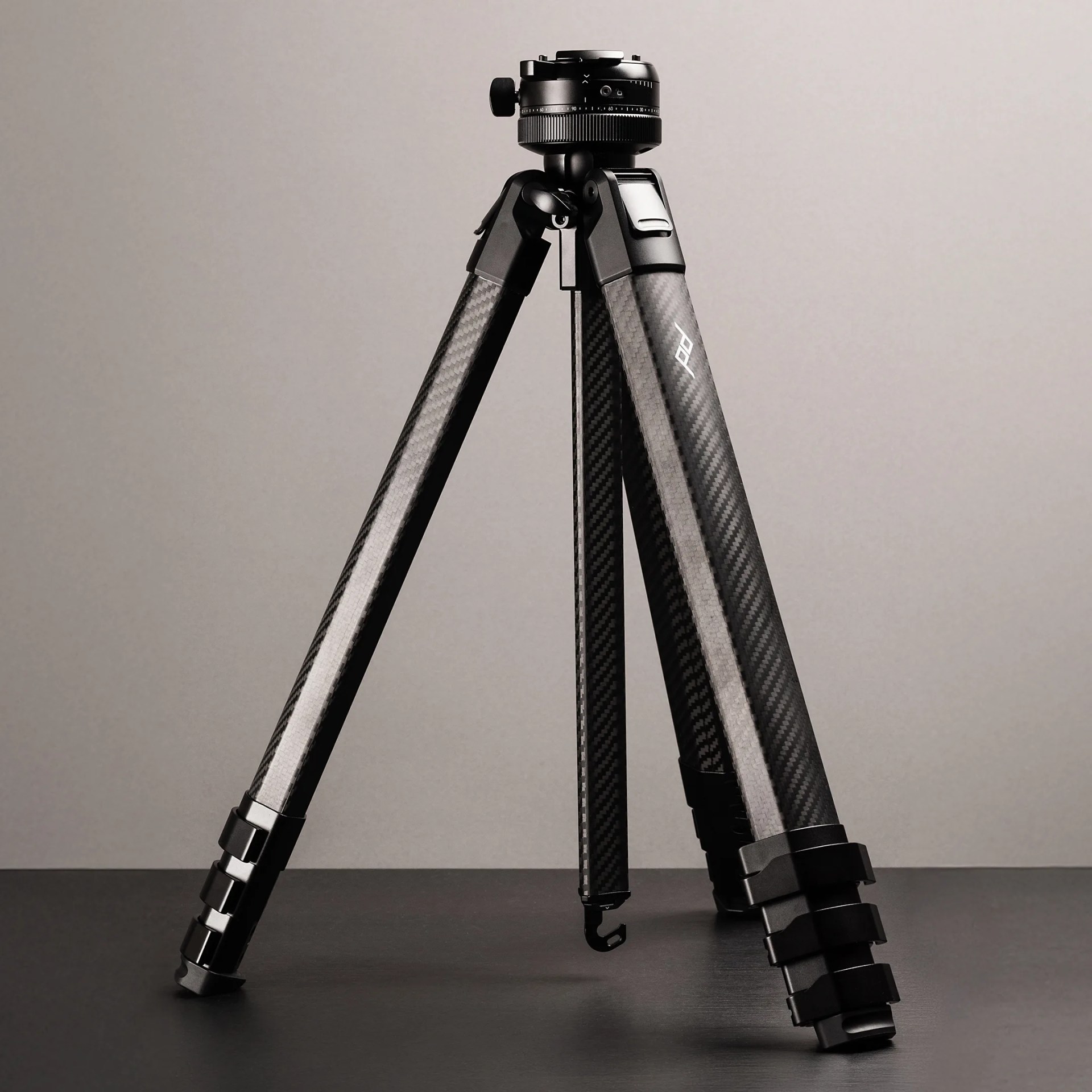 Peak Design
Peak Design
